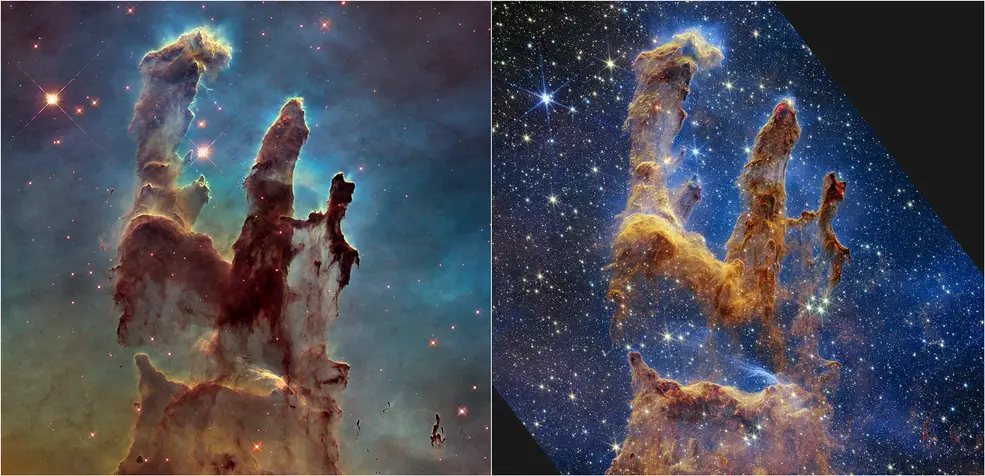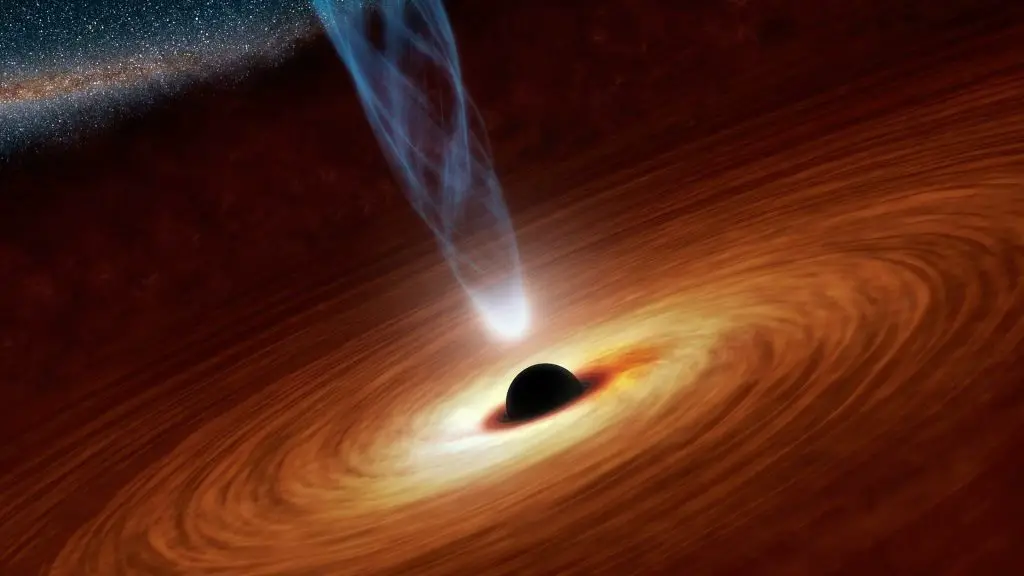The Pillar of Creation is one of the most fascinating nebulae that have Captured our astronomical interest for decades. After Swiss astronomer Jean-Philippe Loys de Chéseaux discovered the Pillar of Creation in 1745, scientists around the globe have been curious to learn more about this nebula. The Pillar of Creation was discovered as an elephant trunk of interstellar gas and dust in the Eagle Nebula.
It is located in the Serpens constellation which is about 6,500–7,000 light-years from Earth. They were named the Pillar of Creation as the gas and dust are always in the process of creating new stars while being disrupted by the light emanating from nearby stars that were newly born. With the launch of the Hubble Space Telescope on April 24, 1990, astronomers knew that they were getting closer to unveiling more mysteries about the Eagle Nebula.
How Hubble Space Telescope observed the Pillar of Creation
On April 1, 1995, Hubble Space Telescope looked toward the Serpens constellation and Captured fascinating photographs of the pillar of Creation. Astronomers Jeff Hester and PaulScowen from Arizona State University were responsible for this breathtaking image of the Pillar of Creation. The outcome of this shot reveals the beauty of this interstellar cloud of dust and gas and also shows how stars are being born.
However, astronomers later used the ESA’s Herschel Space Observatory to rephotograph the Pillar of Creation in 2011. Since Astronomers are still curious to learn more about this great destination, they used the Hubble Space Telescope to capture this great destination in space in 2014. The last image captured by the Hubble Space Telescope marveled the science community until Webb’s recent images.
How James Webb Space Telescope Captured the Pillar of Creation
On October 19th, 2022, NASA officially releases a new image of the Pillar of Creation as recently captured by NASA’s James Webb Space Telescope. The next-generation space telescope used its Near-Infrared Camera (NIRCam) to capture the pillar of Creation in a highly detailed landscape. The infrared image of the Webb Space Telescope shows where new stars are forming within the interstellar dense clouds of gas and dust.
Unlike the Hubble, James Webb revealed a more detailed view of the three-dimensional pillars that appears like a fascinating rock formation. Even though the pillars are made up of dust and gas, they appear to be semi-transparent in near-infrared light. Despite the view of the Pillar of Creation first made popular by the Hubble Space Telescope in 1995, Webb’s image of the object reveals a more detailed outlook.
Comparing Images of Pillar of Creation as Captured by Hubble Space Telescope and That of James Webb Space Telescope
When you look at both Hubble’s and Webb’s images of the Pillar of Creation, you can basically tell the difference. Unlike the Hubble which displayed the Pillars as thick and dusty brown cosmic objects NASA’s James Webb Space Telescope makes them appear brighter and shows many more red stars that are undergoing the formation process and slowly coming into view. This implies that the less penetrable stars of the Hubble Space Telescope are coming into view in the new Webb images.
The background view of Hubble’s capture appears like a sunrise starting with yellow colors at the bottom and gradually transitioning into deeper blue and light green at the top. However, the background view of Webb’s images is shown in blue hues, which elaborate more on the hydrogen atoms, thereby revealing the abundance of stars within the region.
Webb went further to penetrate the dusty pillars and revealed stars that are recently created and those that are still forming and hoping to burst free with time. Webbs Near-Infrared Camera (NIRCam) is so powerful enough that it penetrates some parts of the Pillar of Creation that have been hidden from the Hubble Space Telescope. Although both telescopes revealed the real nature of the Pillar of Creation, Webb Space Telescope went further to show more detailed insights about star formations. What do you think about these images?




